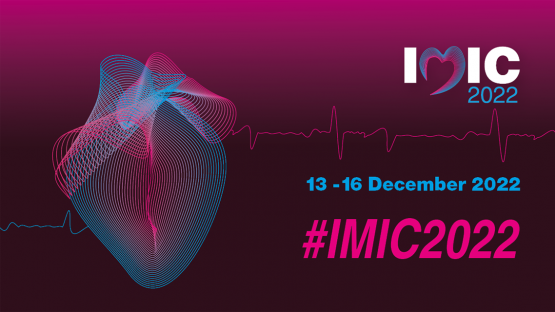Interested contributors have until 30 April 2022 to submit abstracts for the IAEA’s International Conference on Integrated Medical Imaging in Cardiovascular Diseases (IMIC-2022), to be held from 13 to 16 December 2022 at the IAEA headquarters in Vienna, Austria. Find out more about the conference and submission details here.
Cardiovascular diseases (CVDs) are one of the leading causes of death worldwide. They are among the main priorities of health care systems both in developed and developing countries. Medical imaging plays a key role in efforts to manage heart-related diseases by offering strategic advantages in diagnostic and therapeutic decision making – it provides invaluable inputs for diagnosis, staging, treatment, prognosis and follow-up. These nuclear techniques are very useful tools that facilitate specifically tailored clinical management. Therefore, integrating these techniques into national health care systems can provide an invaluable contribution to improving CVD management.
“Cardiovascular diseases are the world’s biggest killer, causing over 16 per cent of all deaths globally, many dying younger than the age of 69,” said Najat Mokhtar, IAEA Deputy Director General and Head of the Department of Nuclear Sciences and Applications. “With increasing life expectancy, these premature deaths are sobering. The conference will highlight why cardiovascular imaging is key towards ensuring the effectiveness and appropriateness of patient management. Without diagnostics and image-guided therapies, the care for patients would be greatly diminished.”
“Especially now, faced with a pandemic in which lung and cardiovascular complications are common, the increasing need for multimodality imaging and the associated human resources and skills are under a bright spotlight,” added Miriam Mikhail-Lette, IAEA radiologist and Scientific Secretary of the conference.
Building on the success of two previous IMIC conferences – in 2013 and in 2016 – the IMIC-2022 will bring together leading clinicians, academics, experts from research laboratories and representatives of non-governmental and international organizations, as well as other practitioners and scientists working in all aspects of cardiac imaging. It will showcase latest developments and good practices in all major cardiovascular conditions for which imaging makes a difference.
“Cardiovascular imaging continues to facilitate improvements in the understanding, diagnosis and treatment of CVD and has the potential to help diminish the global burden of this disease,” said Ahmed Tawakol, Co-Director of the Cardiac MR PET CT Program, Massachusetts General Hospital, Harvard University, who will be presenting at IMIC-2022. “The conference provides unique opportunities to share best practices and cutting-edge innovations in cardiovascular imaging with leaders in the field.”
Topics expected to be covered at the event include:
- Use of medical imaging for the management of stable coronary artery disease, acute coronary syndromes, heart failure, cardiomyopathies, pericardial diseases, primary valve diseases, cardio-oncology, endocarditis, congenital heart disease or other applications
- Implementation of single photon emission computed tomography (SPECT), positron emission tomography (PET), echocardiography, computed tomography (CT) or magnetic resonance imaging (MRI) facilities for cardiac studies
- Experience in setting up an integrated cardiovascular imaging facility
- Radiopharmaceutical production using cyclotrons and radionuclide generators — including good manufacturing practices and quality assurance aspects
- Issues of medical physics, instrumentation and image processing and analysis related to CVD imaging
- Quality audits in integrated cardiovascular imaging and nuclear medicine practices
- Radiation protection for personnel and dose reduction for patients
- Ethics, leadership and education in cardiac imaging
The IAEA supports countries in establishing and strengthening the practice of nuclear medicine and radiology within the context of appropriate use, safety, and quality of clinical practice, to help achieve the United Nations Sustainable Development Goal 3 on good health and well-being for all at all ages.
The IAEA also supports capacity building and technology transfer through technical cooperation projects as well as coordinated research projects and organizes training courses, fellowships, expert missions, webinars and international conferences to support continuous professional development.
Follow the Conference on social media with #IMIC2022 and #Atoms4Health.





